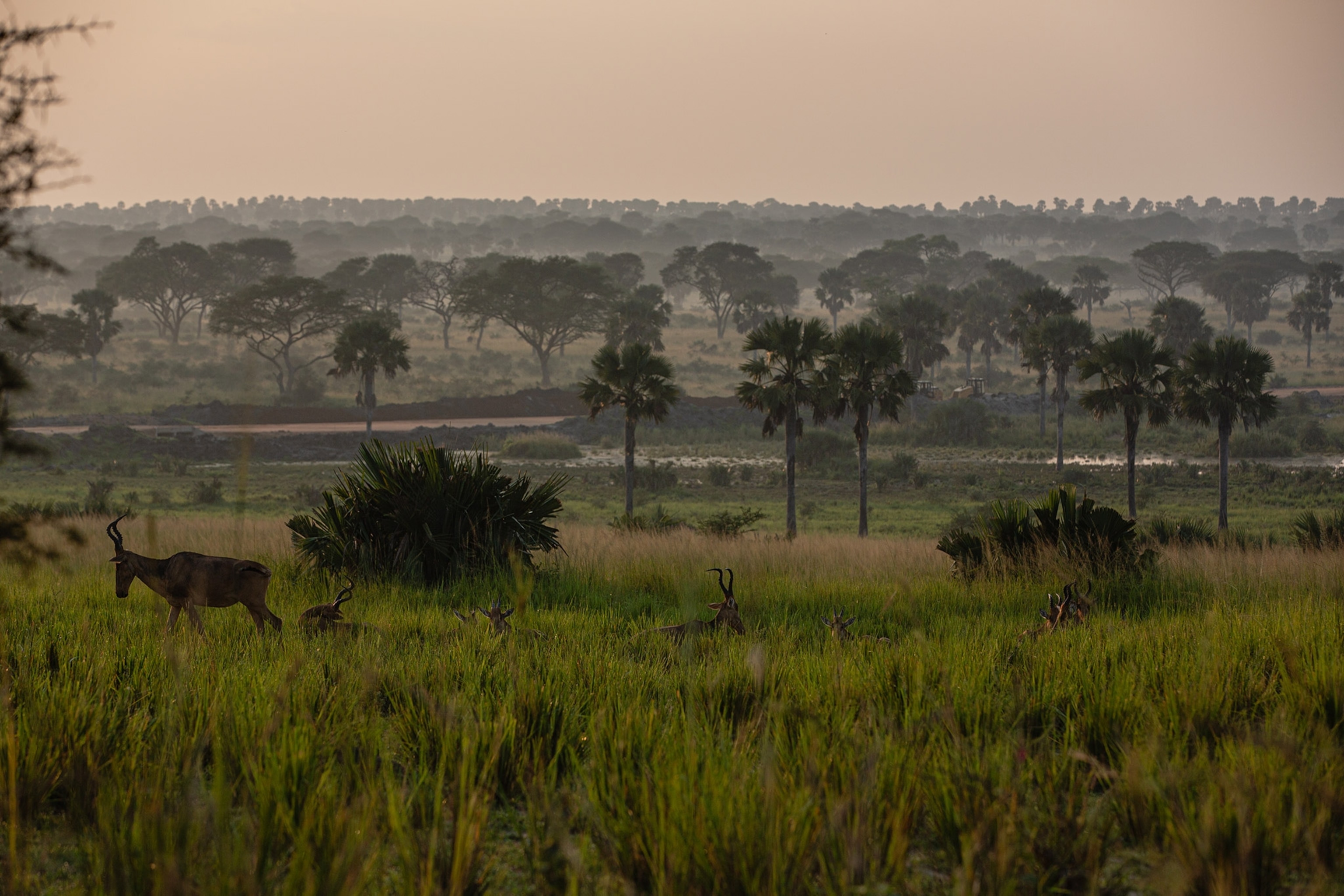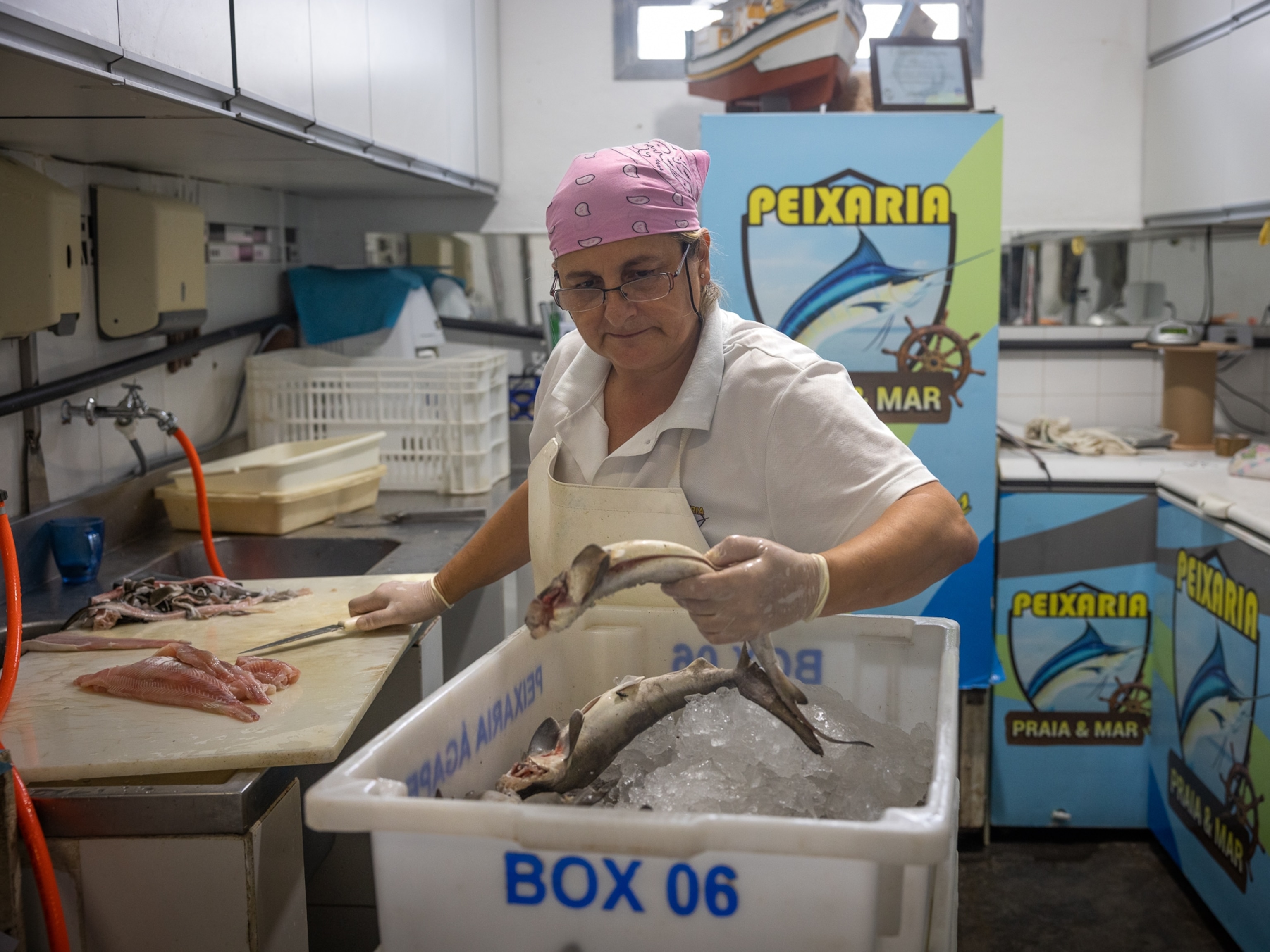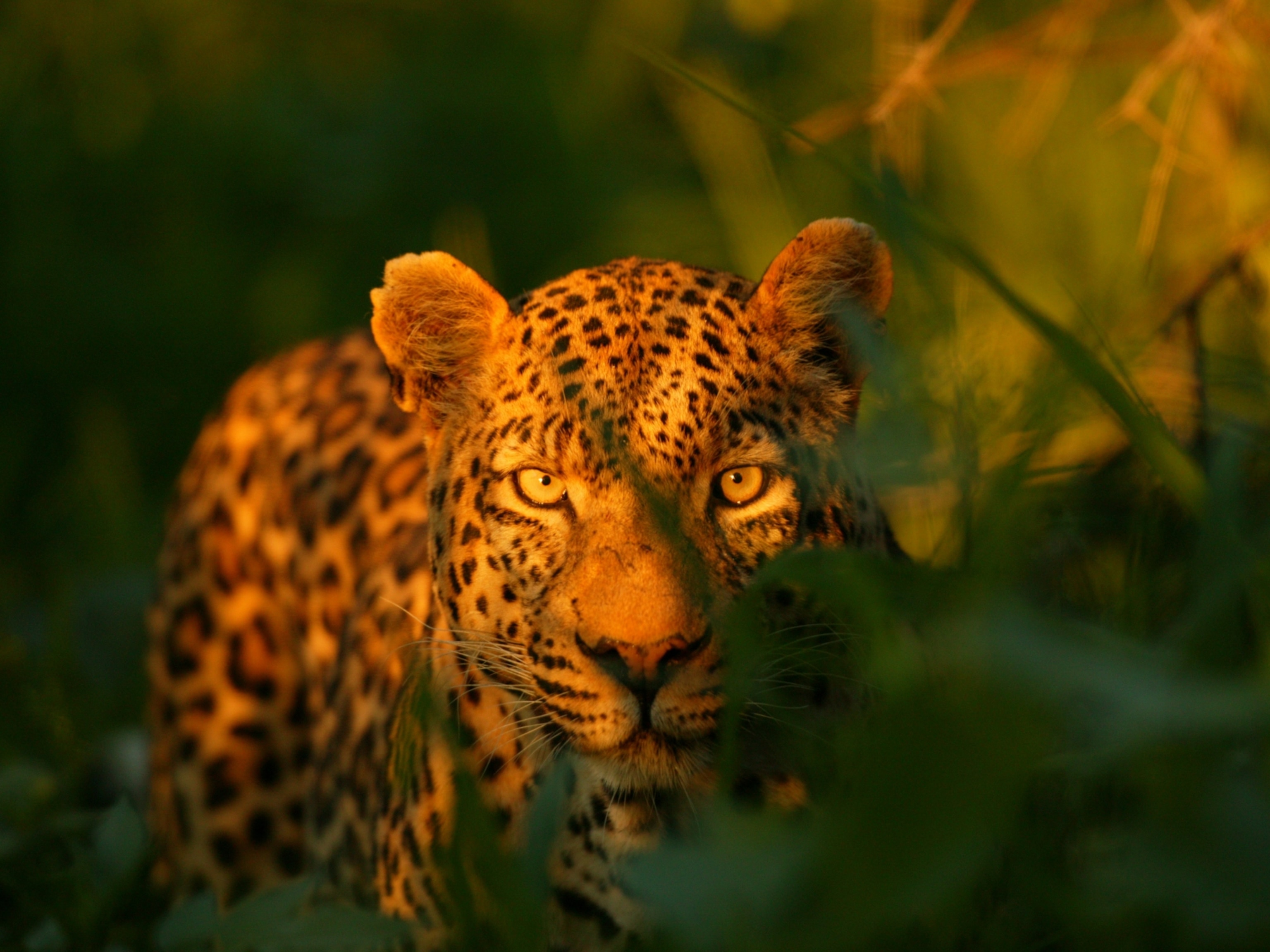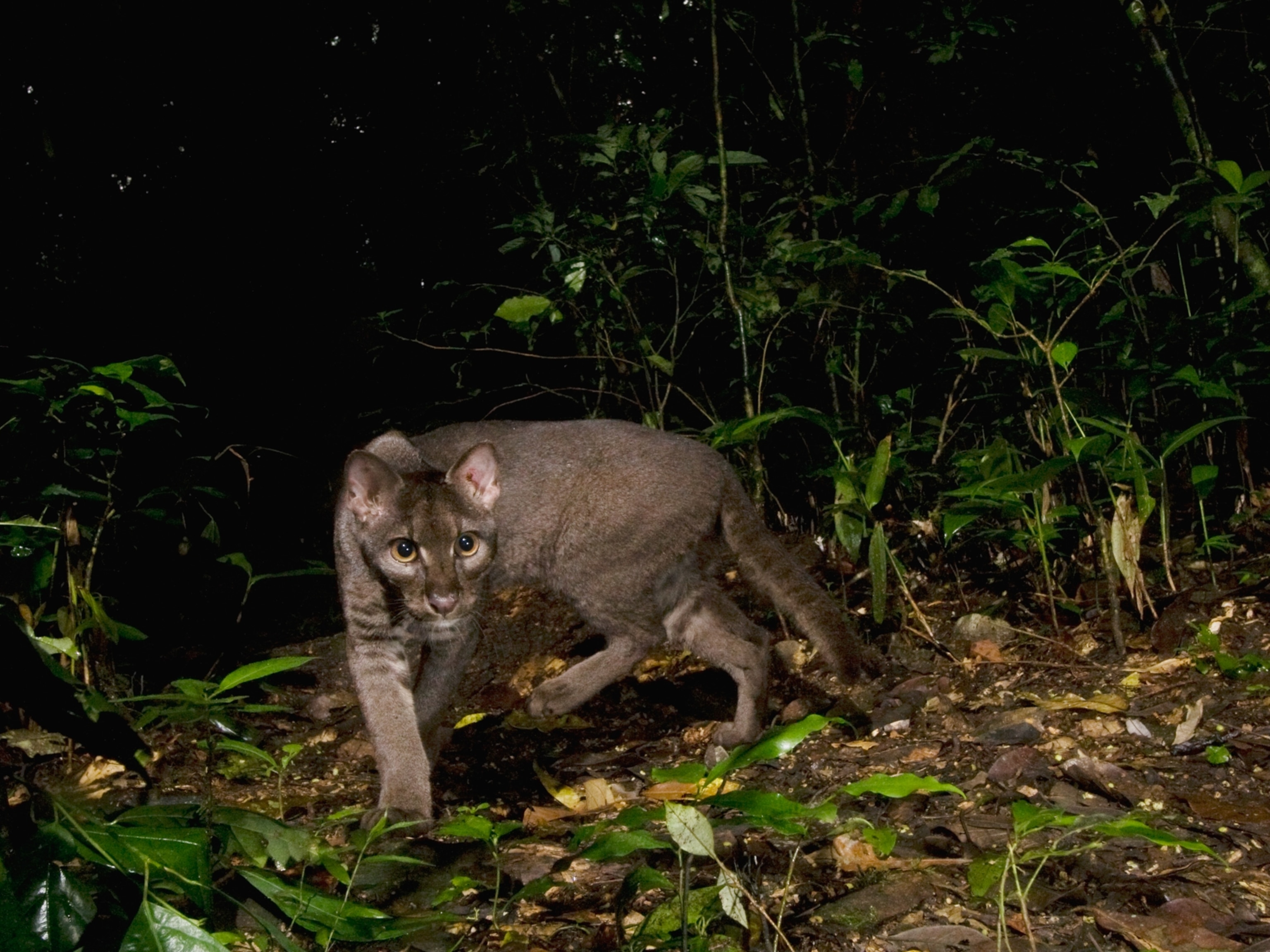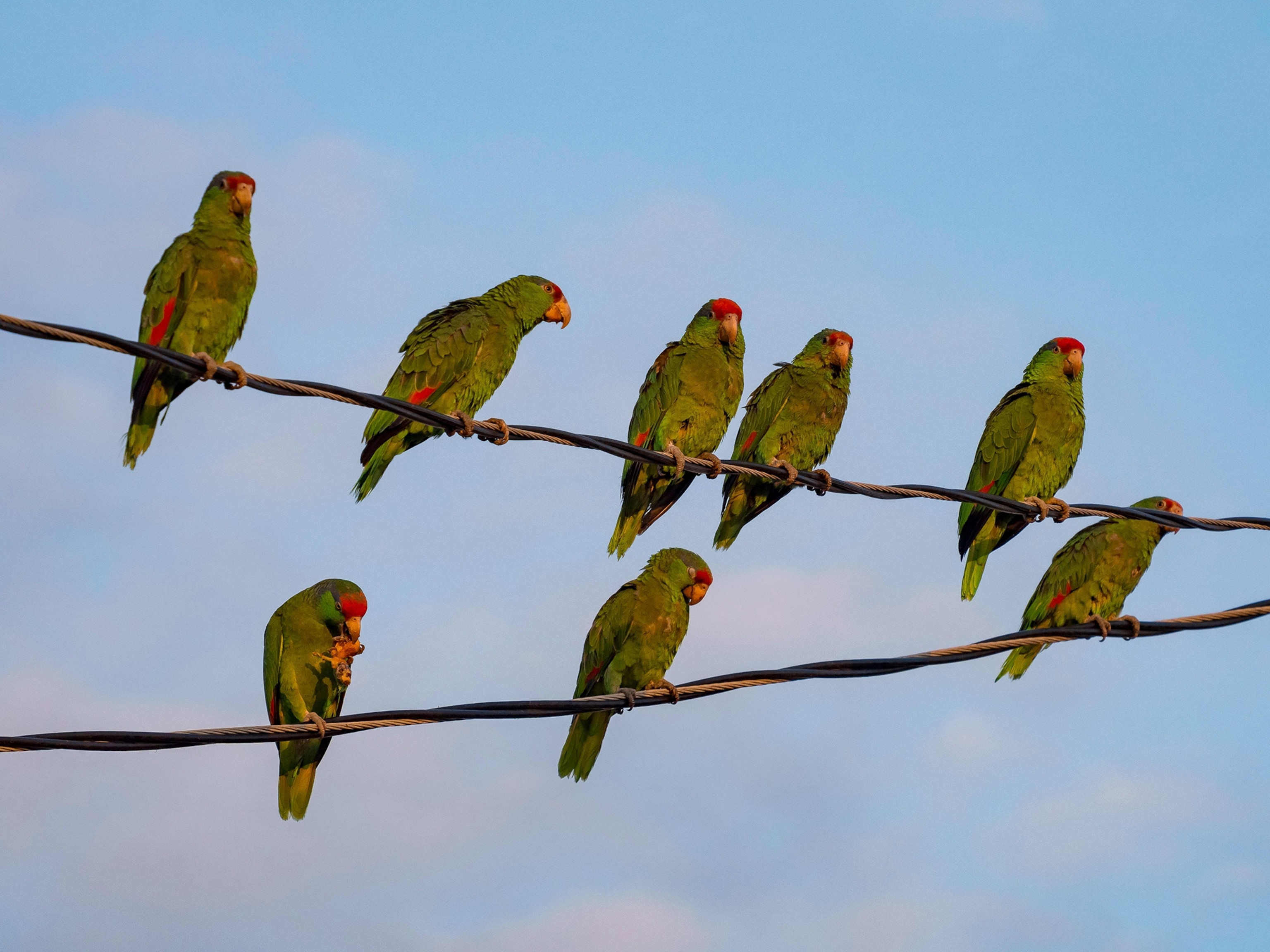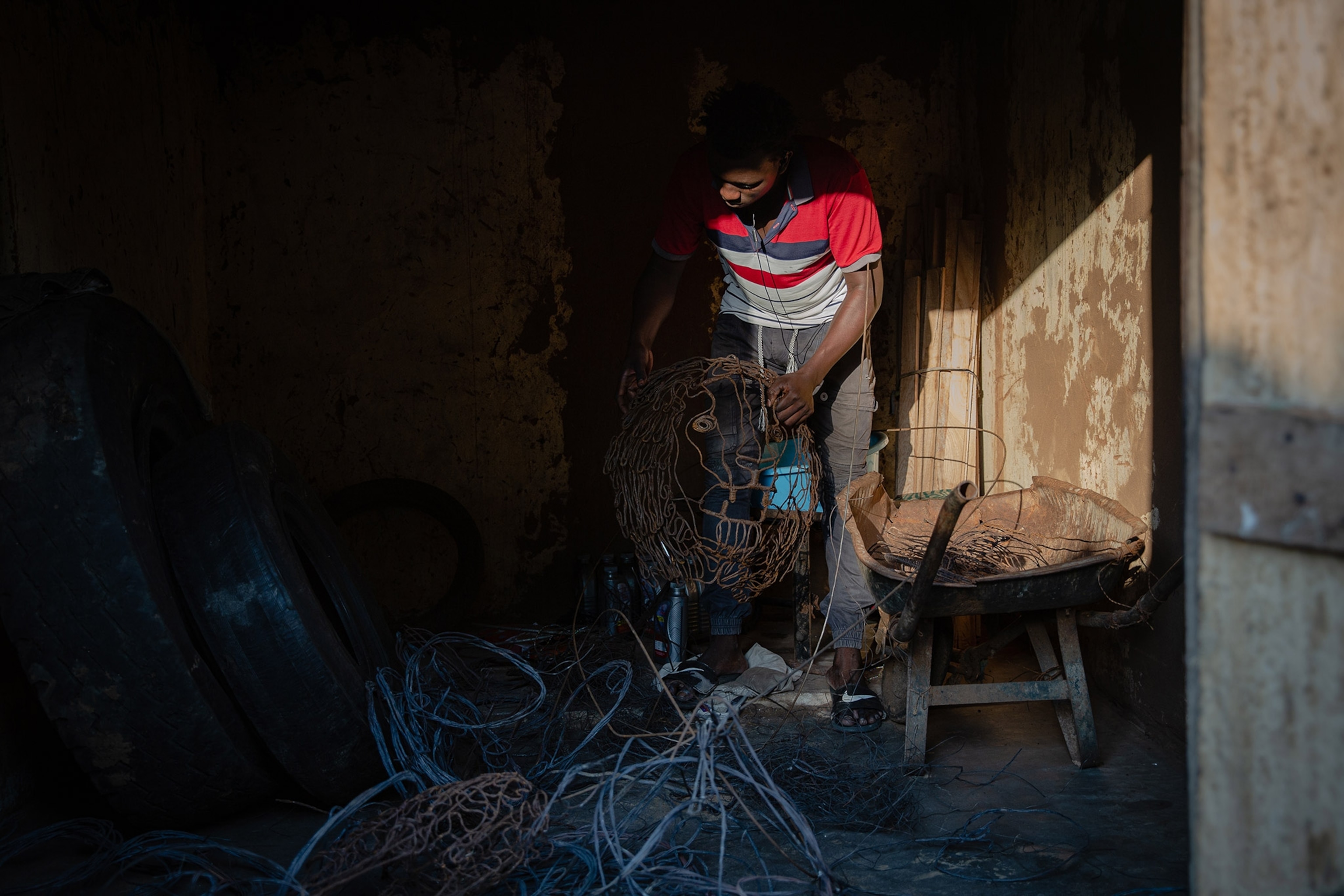
These traps once snared Uganda’s wildlife. Now they’re art
People who live near Uganda’s Murchison Falls National Park are removing wire traps used to illegally capture wildlife and turning them into sculptures.
On a cloudy morning in September, conservation biologist Tutilo Mudumba, several of his colleagues, and 17 staffers with the Uganda Wildlife Authority climbed into three four-wheel-drive vehicles. They were on a mission: to find and remove snares—wire traps intended to kill wildlife—in northwestern Uganda’s Murchison Falls National Park. A recent paper suggests poachers set more illegal snares per square mile in this park than anywhere else in the world. (Read how the pandemic has led to a surge of poaching in Uganda.)
Most poachers here target antelope, buffalo, or warthogs for meat, but elephants, giraffes, and other animals also stumble into the traps. Villages north of the park are among the poorest in Uganda, and many of the snares are set by impoverished locals seeking protein-rich sustenance for themselves and their families.
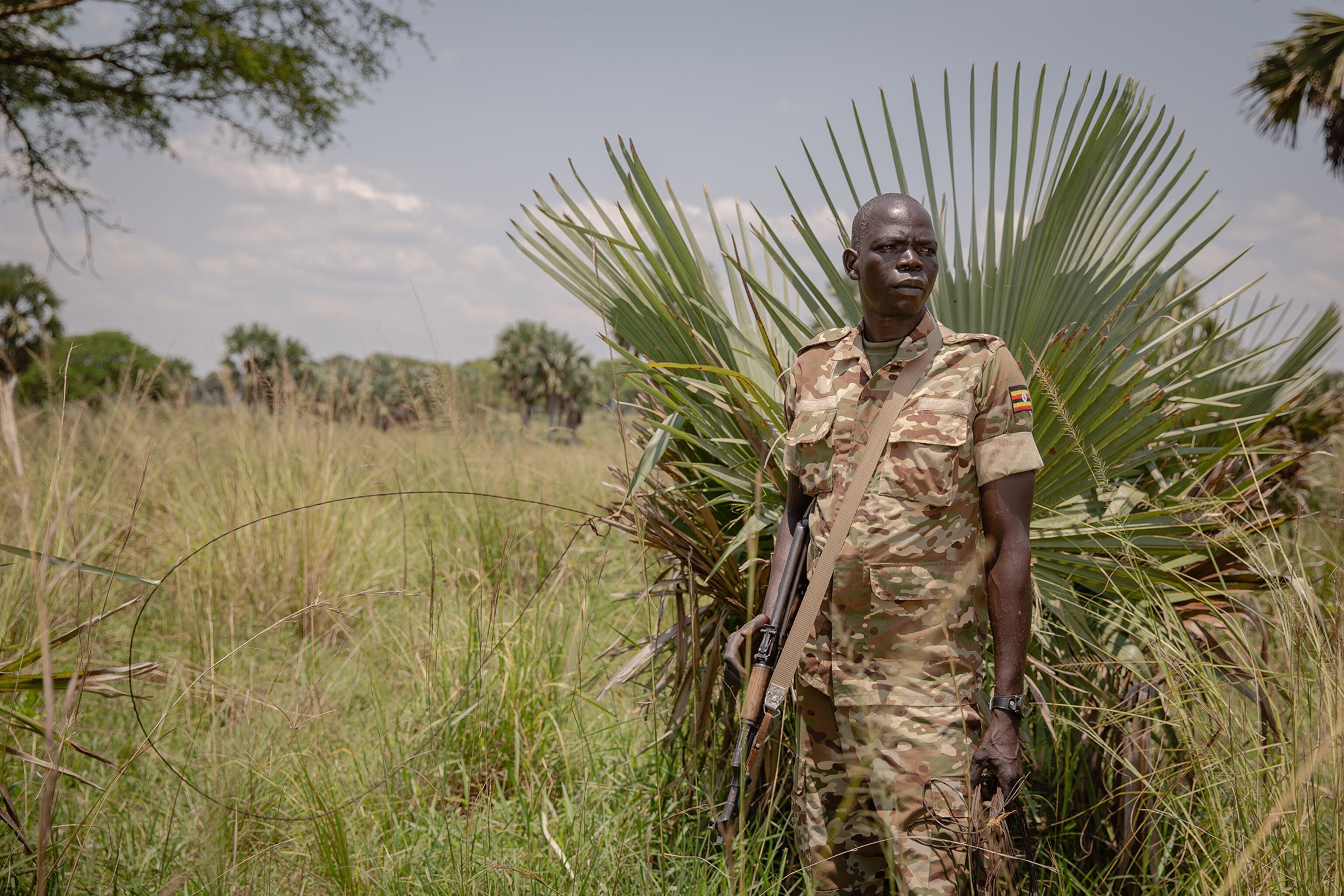
By the time the team members finished their patrol, they had scoured 19 square miles and collected some 200 snares—the typical amount for a 20-person, five-hour search, Mudumba says.
Since 2015 Mudumba has participated in snare-removal operations in the park as the co-director and co-founder of Snares to Wares, a nonprofit that engages community members to transform recovered snares into intricate sculptures of African wildlife. In addition to developing skills as artisans, Snares to Wares employees earn an income that allows them to afford other protein sources, as well as basic needs such as medicine. The program currently employs 620 artisans and typically sells more than 800 sculptures a month, mainly through gift shops in the United States.
“It’s about alternative food sources but also empowering [locals],” says Mudumba, a National Geographic explorer who founded and directs the nonprofit with Robert Montgomery, a wildlife ecologist at Michigan State University, which supports and funds the initiative.
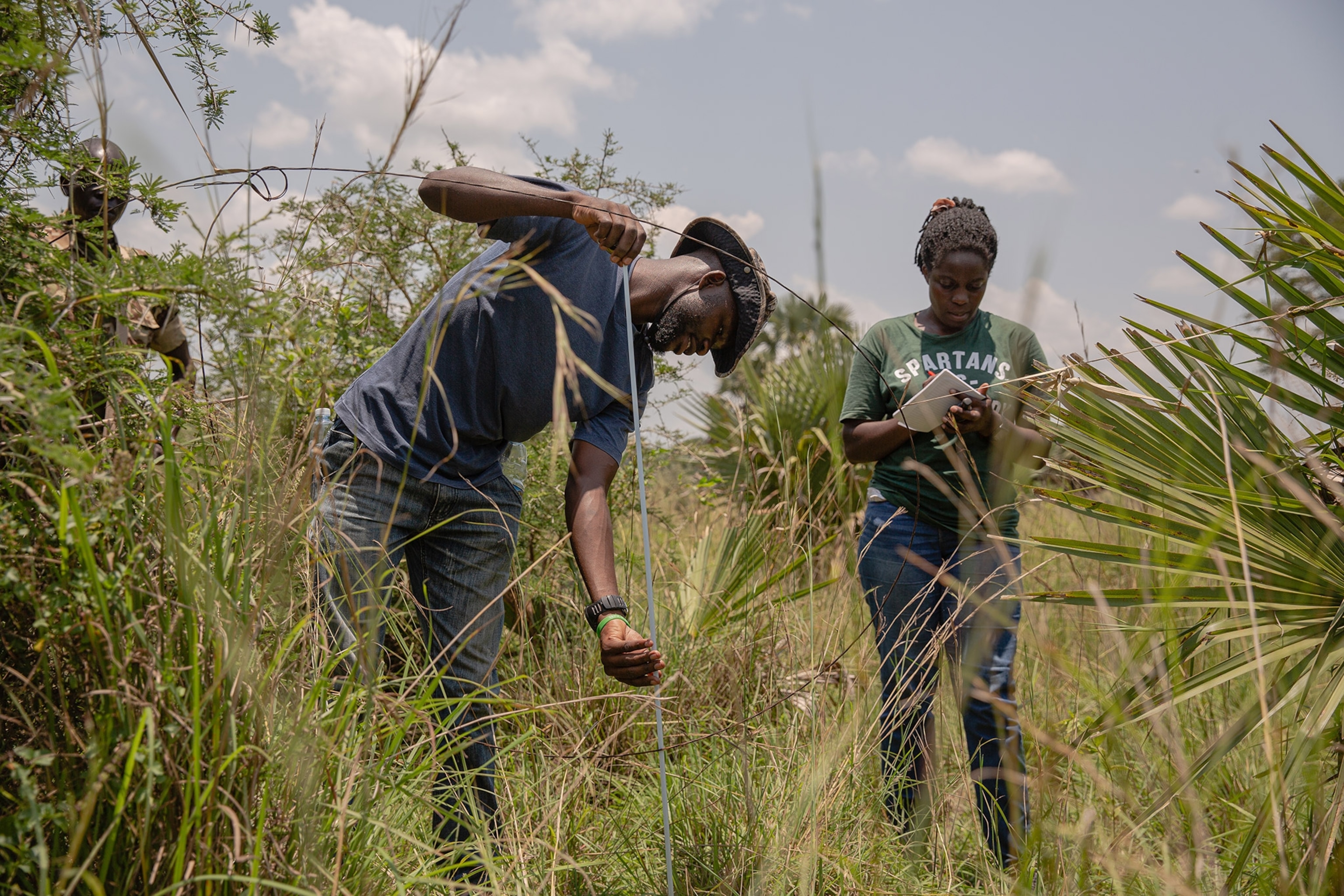
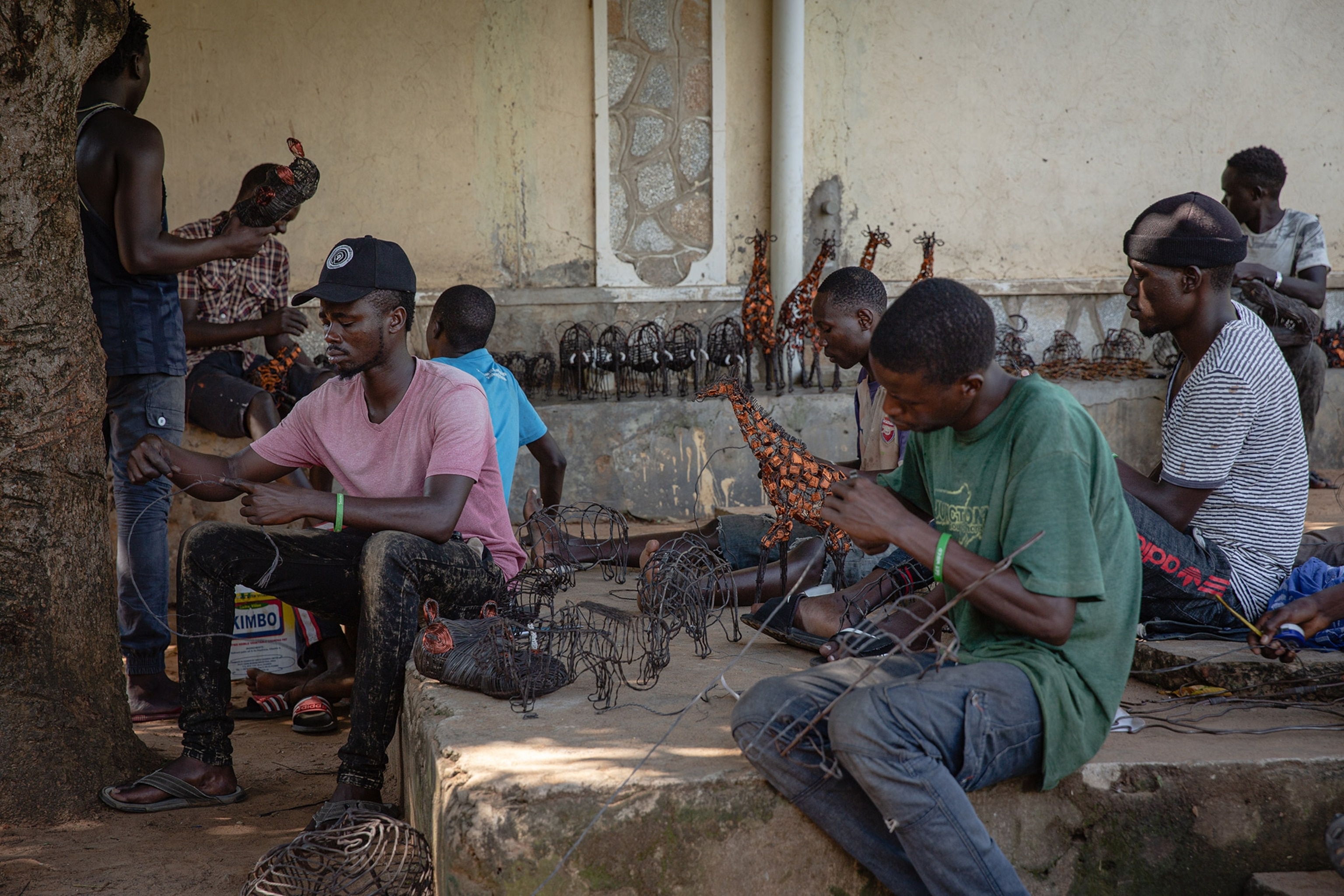
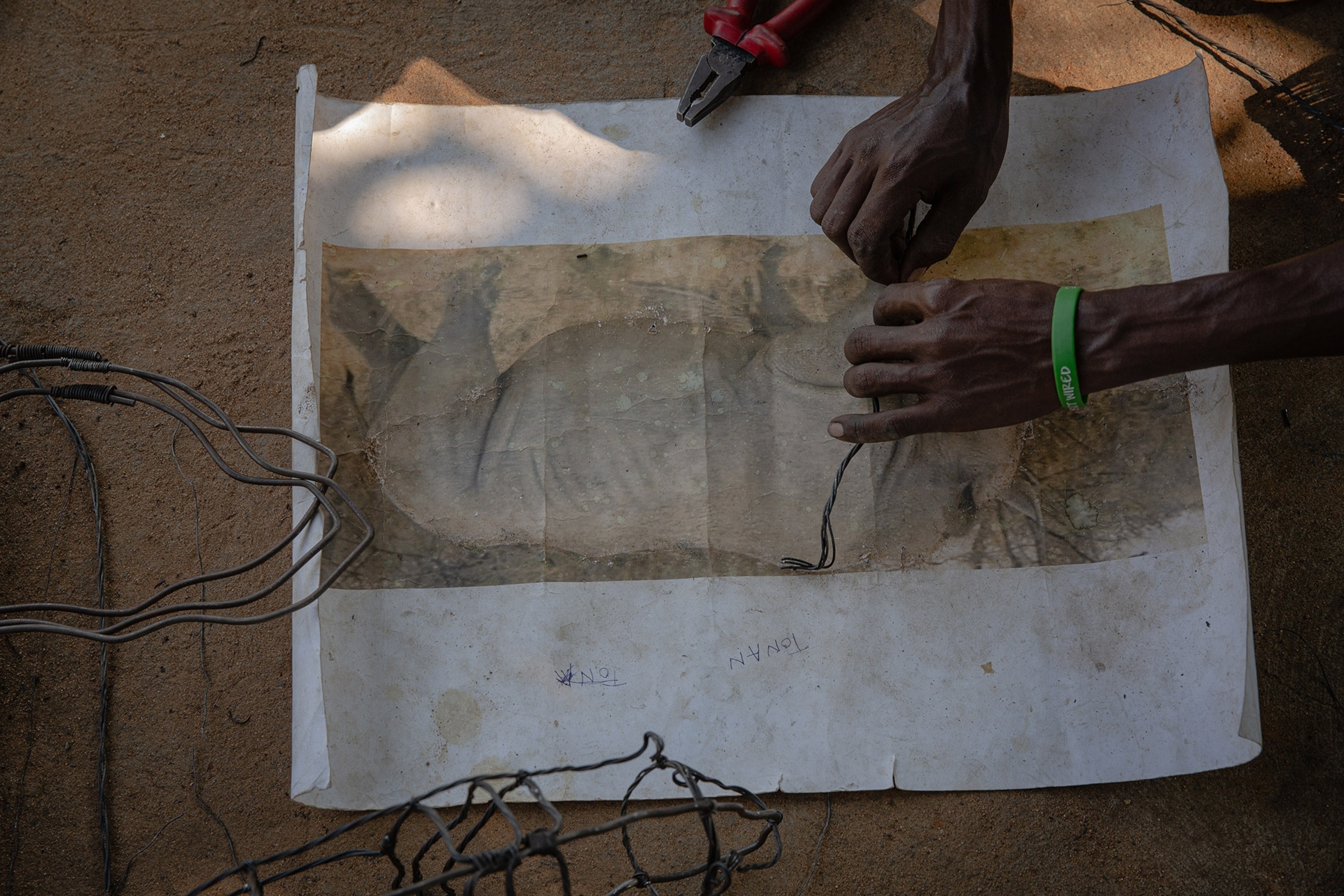
Snagging snares
Easy to make and use, snares are the hunting method of choice in Murchison Falls. Though sometimes constructed with electrical wires, snares are more often made from wires stripped off discarded tires that litter the highway running alongside the park. They’re shaped into loops and anchored to a tree or branch. When an animal steps into the loop, the snare tightens around its limb. Animals typically die from a combination of starvation, blood loss, and dehydration. (Read how Murchison Falls is making a comeback.)
Snares to Wares works with the Uganda Wildlife Authority to collect the traps from the park about every two weeks. They are sorted by material and delivered to the artisans, who’ve been working remotely in small groups, instead of at their outdoor workshop, since the coronavirus pandemic hit in March.


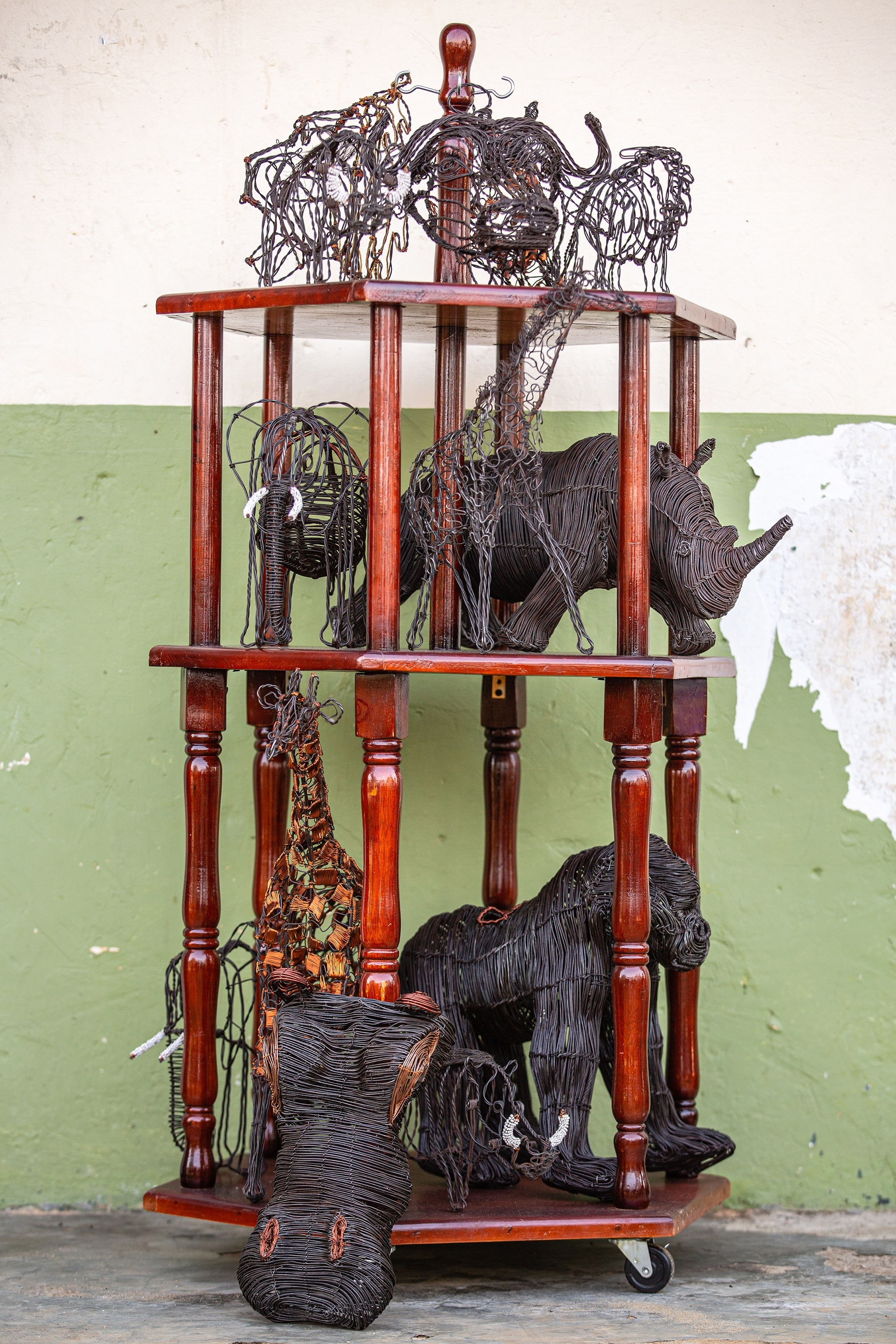
While it’s difficult to measure the program’s impact, Juma Muhamed, Uganda Wildlife Authority’s assistant warden of law enforcement and security at the park, says he believes Snares to Wares has helped reduce the number of poachers and would-be poachers in Murchison Falls. The program shows young people that there are alternatives to snaring.
“We believe [we’ll] see more good results in the future,” he said in an email. “Most of the group members are youth whom we believe, with time, will influence the elders who usually recruit and train them to become poachers.”

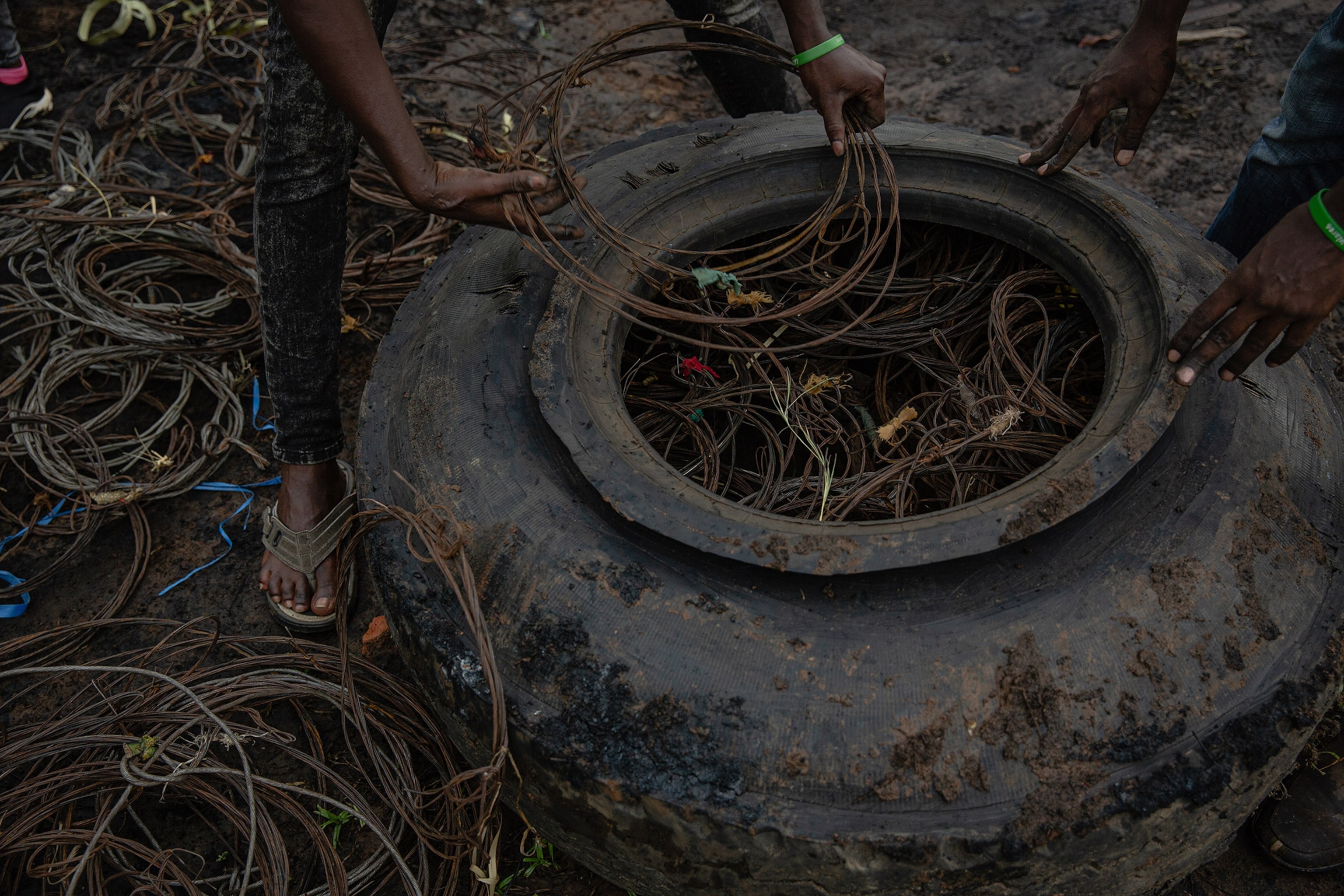
Turning wire into wildlife
Mudumba’s interest in the snaring problem was sparked nearly a decade ago, when he contributed to research that pinpointed the wire traps as the main culprit behind a 40 percent decline in the park’s lions between 2002 and 2009. He spent the next few years studying ways to predict the distribution of snares in the park. Despite numerous trips to remove snares, more would always appear. “We kept doing it, and the snares didn’t end,” he says. (Read how snares are the greatest threat to the African lion.)
When he began working toward his doctorate at Michigan State University in 2015, he and Montgomery hatched the idea for Snares to Wares as a way to “serve the cause of the fire,” as Mudumba puts it. They launched the nonprofit later that year.

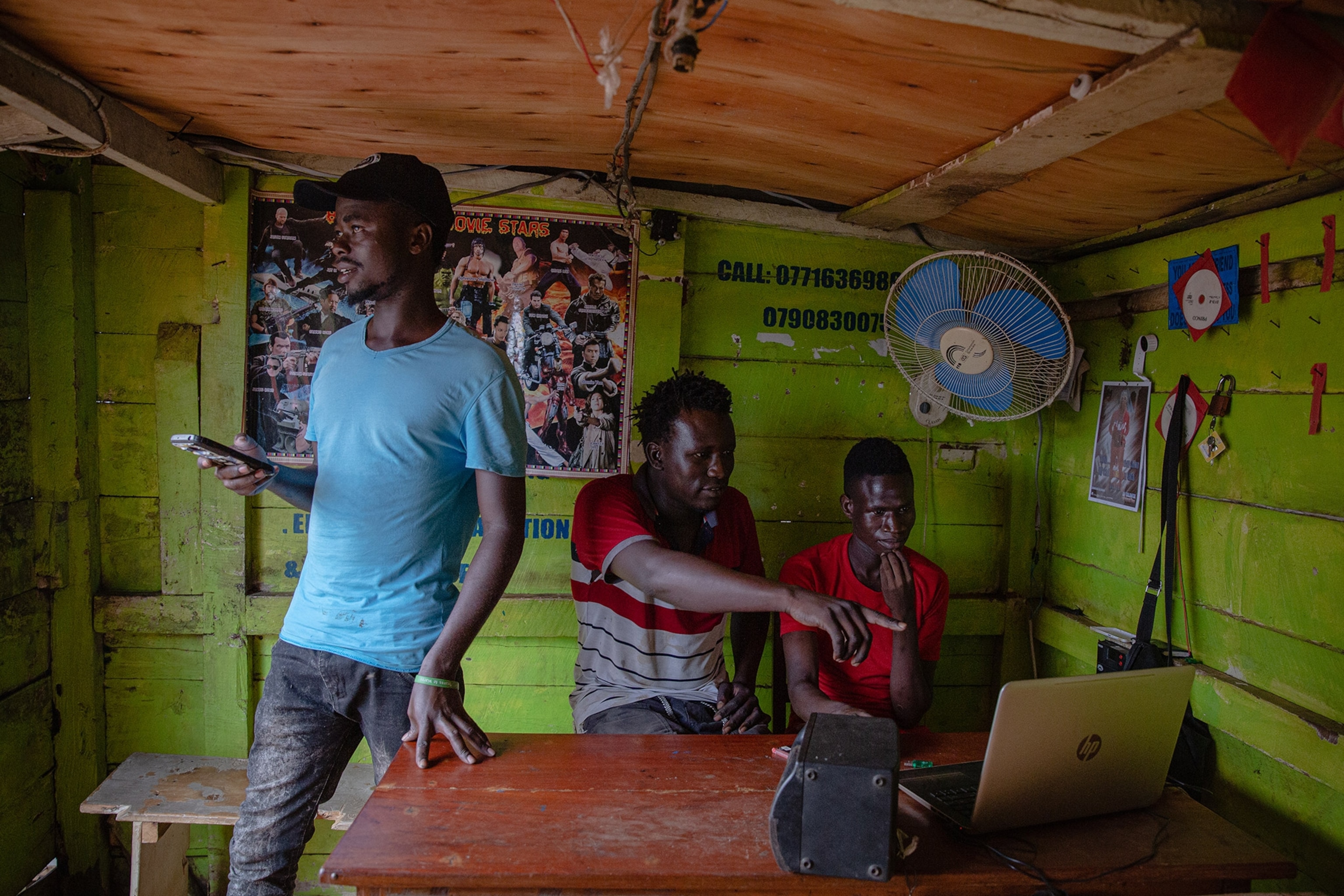
At first, people in the community were skeptical, he says. They couldn’t imagine that anyone would be interested in buying sculptures of wild animals. They themselves had little affection for their local wildlife, he says, because animals often cross the park’s border and end up trampling crops and inciting fear.
Mudumba says he was shocked to learn that some participants didn’t even have a firm understanding of what the animals looked like, having only observed them during tense interactions outside the park. His first step was to arrange trips into the park so that the artisans could study the animals and develop an appreciation for them. They also began learning how to work with the wire, such as treating it with fire to make it more pliable.
When the crafts began to sell, more people began asking to participate. “They knew they could benefit from the work [the artisans] were doing,” he says.
Today, the future of Snares to Wares looks bright, Mudumba says: He believes that community members will continue to trade poaching for artistry. He hopes, in time, to expand the model to other areas.
